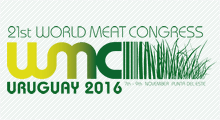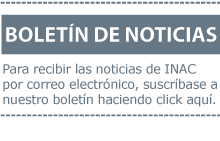The future of beef and lamb production in Uruguay
Dr. Pablo Caputi - National Meat Institute (INAC)
.jpg)
Long - term vision
Traditionally the means of support of Uruguay's economic activity has been cattle and sheep livestock. During the last years the cattle stock has maintained below 12 million heads showing great stability. In contrast with this, the sheep stock has decreased from a maximum of 26 million to the present 9 million.
The domestic market is limited to the size of the country's population, which has maintained in more than 3 million people. Beef consumption is 60 kg per inhabitant per year, one of the world's highest. As the economic size of the domestic market slowly grows, the principal growth driver of the last decades has been the exports. In general terms beef exports represent 60-70% of the total volume produced.
Recent export performance
Uruguay at present exports to more than 100 destinations worldwide, being South Korea and Japan the only large markets that it has not yet accessed. The country has no commercial preference agreements (only 6.300 tons in the EU and 20.000 tons in USA), thus it has to constantly improve its quality standards to maintain its position in the world market.
Table 1- Uruguay beef and lamb exports , 2005-2009
|
|
Beef Exports |
Lamb exports |
||
|
Year |
Volume (thousand ton cw) |
Average Income (USD/ton cw) |
Volume (thousand ton wc) |
Average Income (USD/ton wc) |
|
2005 |
450 |
1724 |
16 |
2269 |
|
2006 |
482 |
2002 |
23 |
2092 |
|
2007 |
395 |
2120 |
22 |
2243 |
|
2008 |
376 |
3249 |
25 |
2861 |
|
2009 |
391 |
2486 |
32 |
2557 |
In the last five years there has been an important valorization in Uruguayan meat in the international markets. In the course of this year the valorization line has continued, reaching an average income of 2640 USD/ton cw for beef and a very significant increase in lamb with 3000 USD/ton cw.
Future Challenges
As there are no significant expansions foreseen in production, the country's strategic challenge is added value. In 2010 the country will complete electronic traceability of all cattle. This system connects with an innovative traceability system in the industry covering all the country. The Uruguayan meat chain may face challenges such as to make a more efficient use of natural resources, to mitigate adverse effects of livestock activity in the environment, promote international trade liberalization and have better communication with final consumers.
The Second IMS Economics Workshop which will take place in Montevideo on September 22-24, 2010, will be an optimum opportunity to discuss these topics with the world's top specialists. We look forward to meet you.






